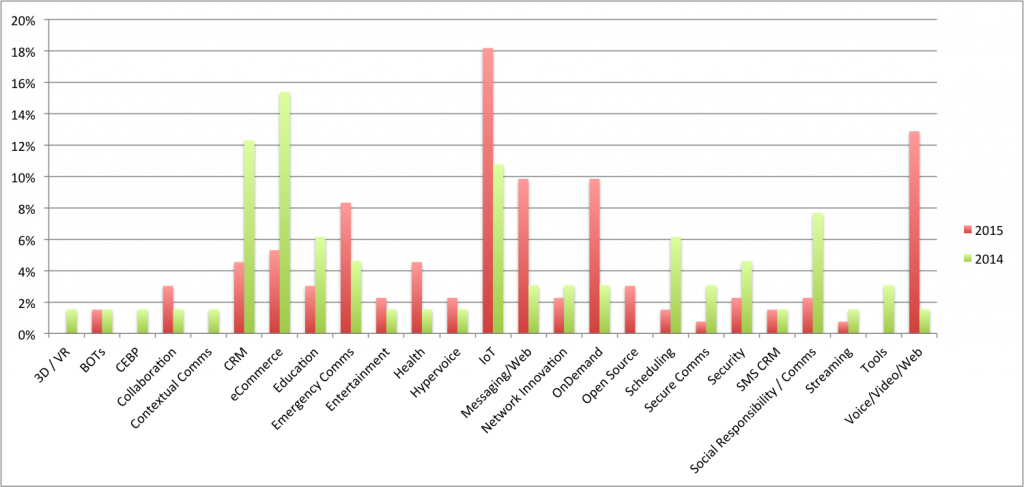 In a previous post on the weblog I listed all the hacks generated so far through TADHack-mini and TADHack Global since 2014. With a brief description and link to the YouTube video. This weblog examines some of the TADHack stats in all those hacks. Of the over 200 hacks created 40 (20%) are currently either commercial or in the process of commercialization, for example through programs like TADMentor. Over half of the hacks are prize winners, with most walking away with a nice $1000 prize. We prefer to distribute cash, so for those coming back home to a partner left alone over a weekend spent hacking, there is some compensation 🙂 Coming back with a toy doesn’t necessarily earn as many brownie-points 😉 The alternative is husband and wife teams – which we have two such teams in 2015.
In a previous post on the weblog I listed all the hacks generated so far through TADHack-mini and TADHack Global since 2014. With a brief description and link to the YouTube video. This weblog examines some of the TADHack stats in all those hacks. Of the over 200 hacks created 40 (20%) are currently either commercial or in the process of commercialization, for example through programs like TADMentor. Over half of the hacks are prize winners, with most walking away with a nice $1000 prize. We prefer to distribute cash, so for those coming back home to a partner left alone over a weekend spent hacking, there is some compensation 🙂 Coming back with a toy doesn’t necessarily earn as many brownie-points 😉 The alternative is husband and wife teams – which we have two such teams in 2015.
Looking between 2014 (green columns) and 2015 (red) on the hacks created show some interesting trends. In 2015 internet of things hacks; hacks that integrate voice, video and the web; as well as messaging and the web; and the category of on-demand services rose in popularity. Emergency communications hacks were quite popular in 2014 as well, with 2015 bringing a richer set of use cases. While in 2014 eCommerce, CRM and IoT were the most popular. For 2016 its too soon for analysis of the TADHack stats, but contextual communications and hacks that again integrate voice, video and the web appear to be the most popular.
There are many more insights across the technologies, programming languages, tools used, and correlations between commercialization and technologies. The purpose here is to provide some insight on the main TADHack stats.
For TADHack Global 2016, which currently will have 28 locations running in parallel around the world, we will be setting some challenges for hacks built on the sponsors’ technologies. With the overall aim to help developers and businesses involved in TADHack become ever more successful through telecom app development.
